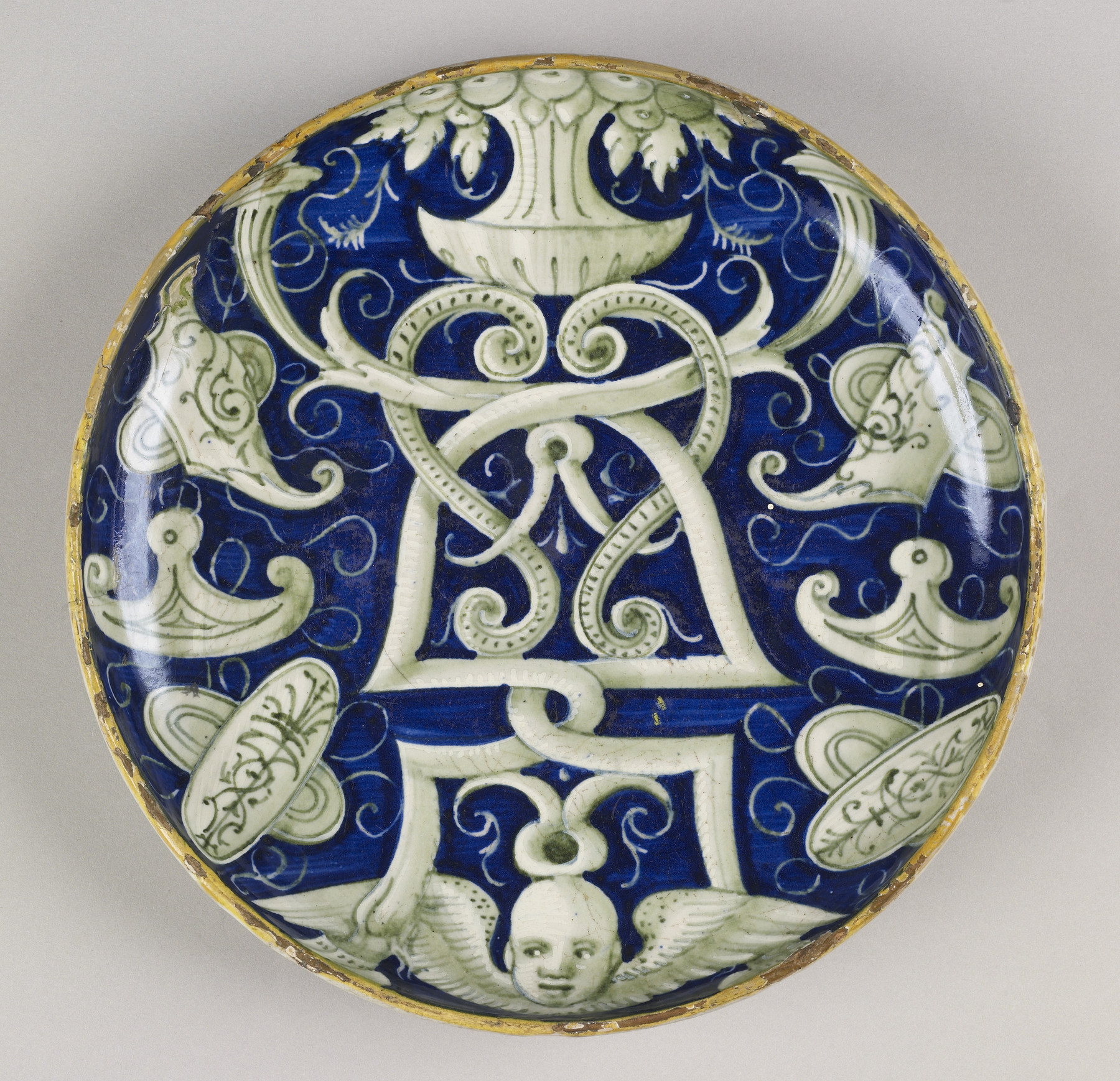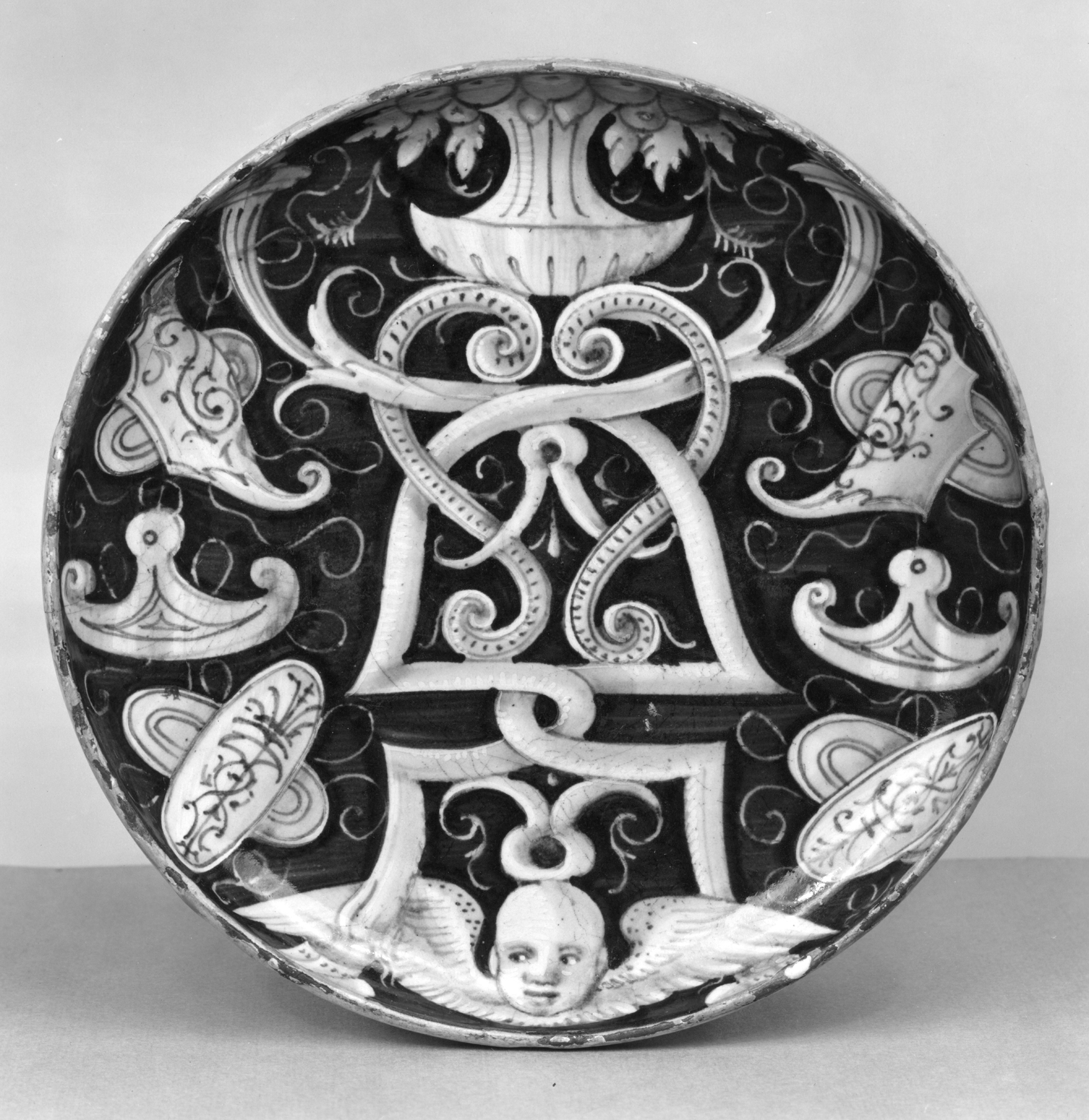Dish on a Low Foot with an Ornamental Design
(Renaissance Europe )
The abstract design is unusual for maiolica in that it is based on a symmetrical configuration of white “straps” on a blue ground rather than on concentric rings of design that follow the shape of the dish as is seen on most of the other vessels. “Strapwork” design was popular as decoration for many types of objects in the mid-1500s, playing to a delight in visual complexity.
At the center of this dish, a winged-cherub head is surmounted by interlaced bands and cornucopias that border a vase filled with leaves and fruit. On either side, trophies (designs influenced by ancient Roman arms and armor) are shown. The back of the dish is painted bluish-white. The designs on this dish were standard maiolica motifs, and were included in Cipriano Piccolpasso’s (1524-1579) manual for potters entitled “The three books of the potter’s art” (1557). Artists without the time or the talent to devise original compositions used Piccolpasso’s motifs to meet the demand for maiolica wares. The symmetrical design of this dish reveals that the artist likely used a cartoon, tracing on one side and then on the other to keep the imagery balanced. This dish was produced in either Urbino or Castel Durante, both renowned centers of maiolica production during the Renaissance period. For more information on “maiolica” see 48.1336
Provenance
Provenance (from the French provenir, 'to come from/forth') is the chronology of the ownership, custody, or location of a historical object. Learn more about provenance at the Walters.
Ichabod T. Williams, New York [date and mode of acquisition unknown]; Sale, American Art Association, New York, February 2, 1915, no. 415a; Henry Walters, Baltimore, 1917, by purchase; Walters Art Museum, 1931, by bequest.
Geographies
Italy, Urbania (Casteldurante) (Place of Origin)
Measurements
H: 1 9/16 × Diam: 8 11/16 in. (4 × 22.1 cm)
Credit Line
Acquired by Henry Walters, 1917
Location in Museum
Accession Number
In libraries, galleries, museums, and archives, an accession number is a unique identifier assigned to each object in the collection.
In libraries, galleries, museums, and archives, an accession number is a unique identifier assigned to each object in the collection.
48.1354






